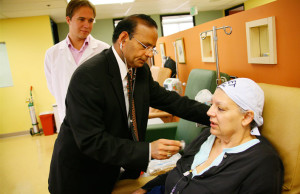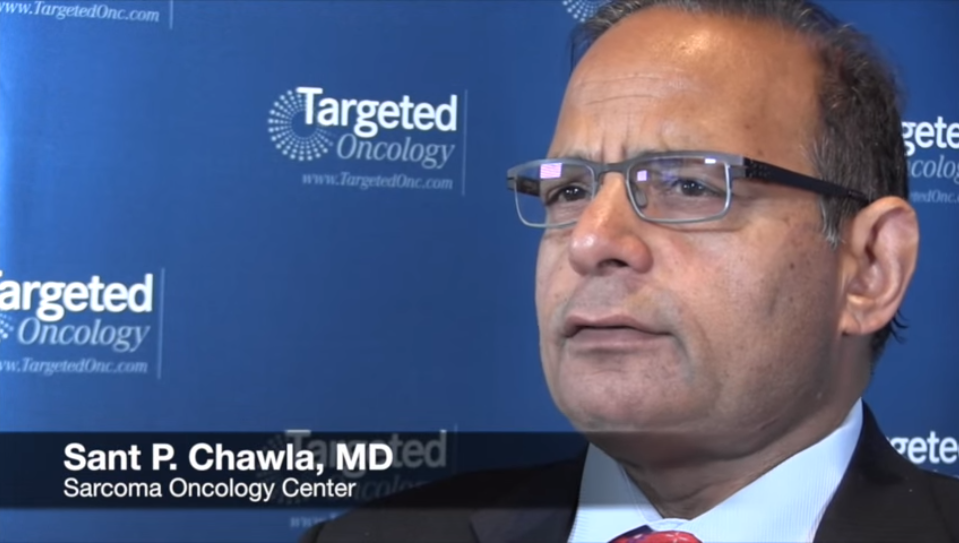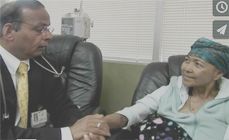To put sarcomas into perspective, it’s important to keep in mind that overall sarcomas are rare, especially when compared to other cancers, and with more than 50 subtypes of sarcoma, each subtype is even rarer. With two main categories of sarcoma: soft tissue and bone sarcoma, one out of 100 cases of adult cancer is a soft tissue sarcoma with bone sarcomas (osteosarcomas) statistically fewer.
Evaluating Prognosis
When first receiving a diagnosis of cancer, it’s very natural to first think about the chance of survival and recovery (prognosis). There are many emotional factors to consider in the face of a serious disease, and Sarcoma Oncology Center oncologists, sensitive to their patients’ needs, always include a conversation about prognosis. We are intimately involved in each patient’s care and dedicated to ensuring that the complexity of each case is addressed and understood by the patient.

How does knowing the prognosis help in coping with a cancer diagnosis? Here are a few key messages that a patient should consider:
- Prognosis can help determine treatment options.
- Prognosis differs based on the type of cancer, the stage, a patient’s age, and length of time after diagnosis.
- Prognosis is an estimate, not a fact, which is statistically based on large groups of patients.
 When receiving medical information, it’s very important to ask the doctor for clarification if cancer-related statistics are unclear. Survival statistics are based on patients treated at least five years ago and may not reflect the most recent advances in treatment.
When receiving medical information, it’s very important to ask the doctor for clarification if cancer-related statistics are unclear. Survival statistics are based on patients treated at least five years ago and may not reflect the most recent advances in treatment.
Although survival statistics provide useful information when deciding among treatment options, they are only one factor in a patient’s comprehensive treatment plan and do not reflect a person’s individual situation.
What does “cured” mean?
A person is considered cured when the disease has been successfully treated and does not return.
The concept of “cure” is difficult to apply to cancer because sometimes a patient can relapse if undetected cancer cells remain in the body after initial treatment. Many cancers are considered “cured” when there is no evidence of cancer after five years of occurrence. However, a relapse after five years is still possible.
Prognosis Predictors
There are several factors that oncologists use as guidelines in considering a patient’s prognosis. The following information helps in reaching an accurate prediction:
- Age
- Gender
- Sarcoma subtype
- Prior Treatment
- Primary tumor site (i.e. trunk, upper or lower extremity)
- Tumor size
- Tumor depth (superficial or deep)
The stage of a tumor is determined by a biopsy of tissue and results of imaging studies. After thorough analysis, a precise diagnosis is achieved and leads to the development of the most effective treatment plan.
Evaluating Treatment
Sarcomas are complex form of cancer and the Sarcoma Oncology Center applies a team-oriented, multi-modal approach for each patient. We collaborate with respected surgeons, pathologists, radiologists, and radiation oncologists from prominent medical institutions including UCLA, USC, Stanford, M.D. Anderson, St. John’s and Cedars Sinai.
Survival statistics are used to help doctors determine which treatments provide the most benefit and whether the benefits outweigh any risks (such as unpleasant side effects) associated with the treatment. Studies have show that for certain types of cancer, chemotherapy produces the best long-term results when patients receive consistent treatment.
Contact the Sarcoma Oncology Specialists Today
Sarcoma Oncology Center offers patients the best possible solution and considers the physical and emotional well being of each patient. Please contact our center at 310-552-9999 to schedule a consultation with one of our oncologists to discuss your personal situation and answer your questions.
Learn more about sarcoma treatment methodology at the Sarcoma Oncology Center.





